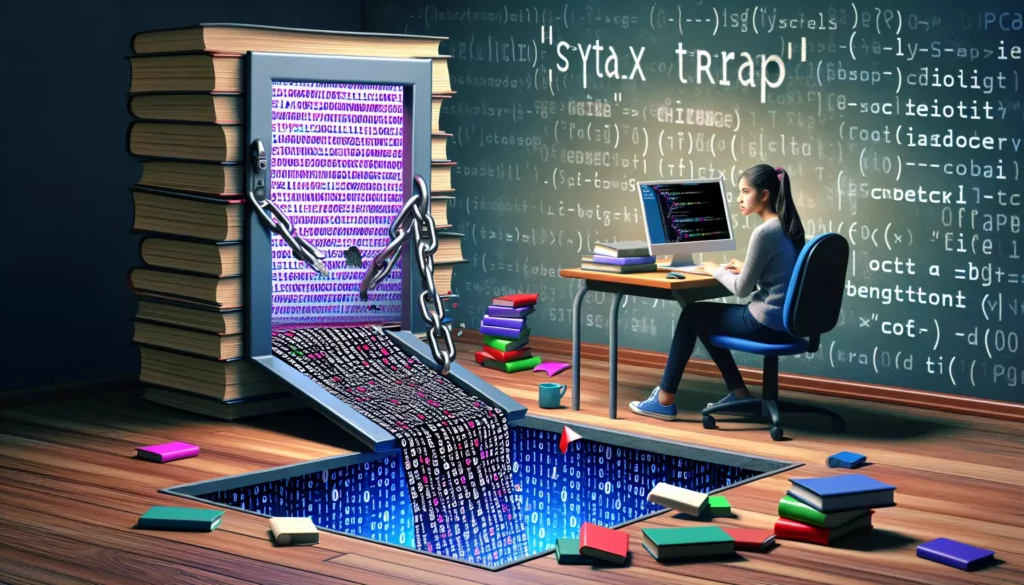The Syntax Trap: Why Popular Coding Platforms Are Failing Aspiring Programmers

Programming education has exploded in the last decade. Platforms like Codecademy, FreeCodeCamp, and countless others promise to turn complete beginners into job-ready developers in months. Yet despite this boom, there’s a glaring problem that most students only discover after they’ve invested significant time and money: these platforms teach you to code, but they don’t teach you to think like a programmer.
The Uncomfortable Truth About Modern Coding Education
Take Codecademy, one of the most popular coding platforms with millions of users. Despite its reach, it holds a concerning 2.7-star rating on Trustpilot. The complaints are remarkably consistent: students feel prepared for tutorials but completely lost when facing real programming challenges.
This isn’t a coincidence—it’s a fundamental flaw in how these platforms approach programming education.
The Technology-First Approach: Teaching Tools Without Thinking
Most coding platforms follow what I call the “technology-first” approach:
- Learn the syntax (variables, loops, functions)
- Build projects (following step-by-step tutorials)
- Master frameworks (React, Django, etc.)
- Get certified and start applying for jobs
On the surface, this seems logical. After all, you need to know the tools before you can use them, right?
But here’s the problem: this approach is like teaching someone mathematical formulas without teaching them how to solve problems. You might memorize that the quadratic formula is x = (-b ± √(b²-4ac)) / 2a, but that knowledge is useless if you can’t recognize when and how to apply it.
What’s Really Missing: Algorithmic Thinking
Programming isn’t about memorizing syntax or following tutorials—it’s about breaking down complex problems into smaller, solvable pieces. This skill, often called algorithmic thinking or computational thinking, involves:
- Pattern recognition: Identifying similarities between different problems
- Abstraction: Focusing on the essential features while ignoring irrelevant details
- Decomposition: Breaking large problems into manageable sub-problems
- Algorithm design: Creating step-by-step solutions that actually work
These skills are what separate programmers who can only follow tutorials from those who can build original solutions to real-world problems.
The LeetCode Gap: Too Hard, Too Soon
There is one platform that focuses specifically on problem-solving: LeetCode. It’s become the gold standard for technical interviews at major tech companies. However, LeetCode has a critical flaw for beginners: even its “easy” problems are challenging for most working developers.
LeetCode assumes you already have strong problem-solving fundamentals. It’s like trying to learn calculus without understanding algebra—the gap is simply too large for most beginners to bridge on their own.
This creates a dangerous situation where students jump from “Hello, World!” tutorials directly to complex algorithmic challenges, leading to frustration and abandonment.
Why This Matters More Than Ever
The stakes for this gap in programming education have never been higher. As AI tools become more sophisticated, the programming job market is splitting into two categories:
Replaceable programmers: Those who primarily copy-paste code, follow tutorials, and implement existing solutions without understanding the underlying logic.
Irreplaceable programmers: Those who can analyze problems, design algorithms, and create original solutions (skills that AI currently cannot replicate).
The harsh reality is that programming is fundamentally algorithmic, whether you’re designing system architecture or writing a simple function. Without strong problem-solving skills, you’re building your career on increasingly shaky ground.
The Missing Bridge: From Beginner to Problem Solver
The programming education market has a clear gap:
- Syntax-focused platforms (Codecademy, etc.): Great for absolute beginners but don’t develop thinking skills
- Advanced problem-solving platforms (LeetCode): Excellent for experienced programmers but too difficult for beginners
What’s missing is a bridge: a platform that takes complete beginners and gradually develops their problem-solving abilities until they can tackle real algorithmic challenges.
This bridge would need to:
- Start with intuitive problems that don’t require advanced math or CS knowledge
- Build thinking patterns gradually through carefully sequenced exercises
- Connect abstract concepts to concrete, relatable examples
- Provide scaffolding that supports students as they develop independence
- Create smooth progression from basic logic to complex algorithms
A Better Path Forward
Imagine a learning experience that begins with simple, everyday problems:
- “How would you organize books on a shelf most efficiently?”
- “What’s the best way to find a specific contact in your phone?”
- “How do you plan the most efficient route for running errands?”
These problems teach the same thinking patterns as complex programming challenges, but in an accessible way. Students develop the mental models first, then learn to express them in code.
As learners progress, they gradually encounter more abstract challenges, always with the support they need to succeed. By the time they reach traditional “hard” problems, they have the thinking tools to approach them systematically.
The Future of Programming Education
The current model of programming education (teaching syntax first, thinking second or never) is fundamentally broken. As the industry evolves and AI changes the landscape, we need platforms that prioritize the human element of programming: creative problem-solving.
The most successful programmers of the future won’t be those who know the most frameworks or can copy-paste the most code. They’ll be those who can think algorithmically, break down complex problems, and design elegant solutions.
It’s time for programming education to catch up to this reality.
The gap between syntax and thinking in programming education isn’t just an inconvenience: it’s a crisis that’s holding back thousands of aspiring developers. Until we bridge this gap, we’ll continue to see talented individuals struggle unnecessarily, while the industry complains about a shortage of truly skilled programmers.

